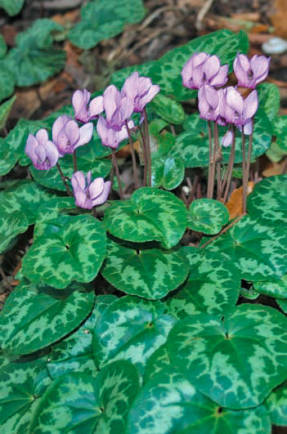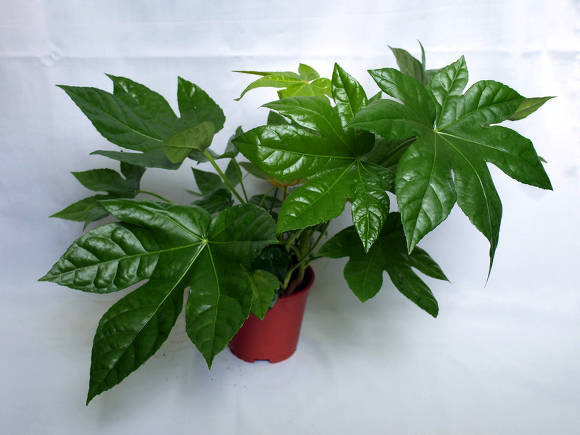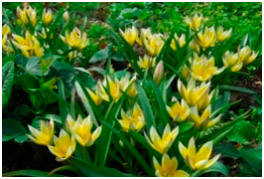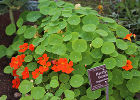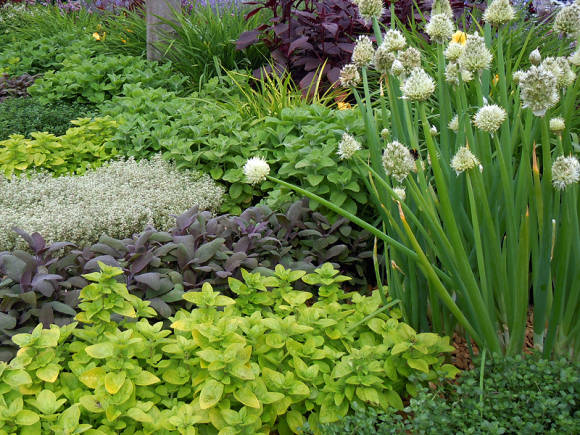Japanese camellia is truly the queen of gardens in warm climates and a wonderful tub plant. Its charming bloom can begin in November and end in March-April. To date, more than 2,000 decorative varieties have been registered with simple, semi-double, double, peony, anemone and other magnificent forms of flowers with white, pink different shades and red petals.
About the variety of species and varieties - on the page Camellia.
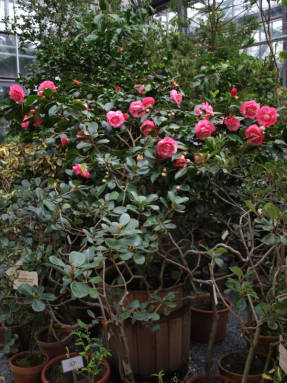 |  |
However, many types of camellias in their homeland also have a purely practical value.
Camellia sasanqua with more than 300 flowering garden varieties in China and Japan has been cultivated for many centuries not for the flowers that bloom in autumn, but for obtaining vegetable oil from the seeds. Camellia is also a source of high-quality edible oil, and it is also used in horticulture to obtain decorative hybrid varieties with high winter hardiness.
And of course, everyone knows the Tea bush - Chinese camellia, from the leaves of which the world famous tea is brewed. By the way, a similar drink can also be prepared from the leaves of Japanese camellia and other species.
Basically, we receive varieties of Japanese camellia. Sometimes you can find small bushes of Chinese camellia on sale.
Camellia at home and in the garden
Camellias are considered demanding plants, but a lot depends on their correct planting.
They grow steadily outdoors in USDA 7-10 hardiness zones, when temperatures do not drop below -17 ° C, and only some varieties, provided they are protected from the winter sun and wind, can be planted in zone 6, they can withstand frosts down to -23 ° C. In our gardens, camellias can be grown in the Sochi region and in the Crimea. In other regions they are kept as container plants. It is not recommended to keep camellias indoors all year round. Our apartments are too warm, dry and dark for their successful growth. If the plants have to spend the winter at home, you will have to pay attention to temperature, humidity and light.
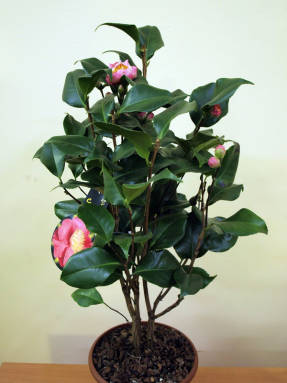 | 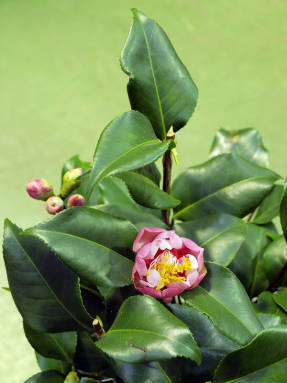 |
Lighting. Camellias are forest plants and prefer little protection from the scorching sun.
At home, place your camellia pots in a cool place so that they are exposed to oblique sunlight. During the summer months, take your plants outdoors, on a balcony or in a garden, to protect them from the scorching sun.
In the garden, plant the shrub in a light openwork partial shade, although with careful watering, the camellia can be grown in an open, sunny place. Young plants are more sensitive to the sun, in mature shrubs the shadow falling from the crown protects the roots from overheating and thereby increases their resistance to the sun. Choose a place protected from strong winds and bright morning sun during the cold season.
Temperature. Camellias do not tolerate heat well, prefer cool conditions, but most varieties do not tolerate even slight frosts - bring them home in time, without waiting for the roots to freeze. From September until flowering, which may occur in February-March, keep the plant at a temperature of 0 ... + 10 ° C. If the temperature during the opening of the buds is high, then they can fall off. Flowers will last longer, for several weeks, if the temperature in the room is between +7 and +16 ° C.
In the garden, give preference to more winter-hardy varieties, there flowering will come a few weeks later than container specimens in greenhouses. Protect plants from the sun with a net.
Priming. Camellias are usually found on humus-rich acidic (pH 6-6.5) and well-drained soils; they grow poorly on substrates rich in calcium. For a potted plant, a ready-made acidic peat soil with the addition of about ¼ the volume of perlite is suitable.
To fill the planting pit in the garden, it is better to prepare a special soil consisting of equal shares of high-moor peat, coniferous soil, leaf humus and sand. On heavy clay soils from below, it is necessary to make drainage from broken bricks.
- Soils and soil mixtures for indoor plants
- Transplanting indoor plants
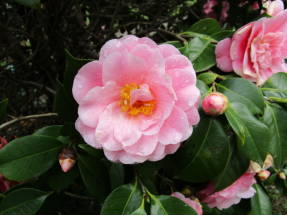 |  |
Watering. Most species do not tolerate even a short-term drought. In their habitats, the soils are always rich in moisture, but without stagnant water. Keep the soil evenly moist, water as soon as the top layer dries. Overdrying or waterlogging during the laying of flower buds in the summer will cause them to fall off.
Plants are demanding on the quality of the irrigation water. Too hard tap or well water will gradually build up calcium salts, causing the soil to alkalize near the roots. It is ideal to use soft rainwater for irrigation.
Read more in the article Watering rules for indoor plants.
Air humidity. Camellias require high humidity for normal growth. Spray the leaves regularly with a fine spray, and if the indoor air is too dry, install a cold steam humidifier.
Top dressing. Japanese camellia blooms in winter or early spring, and as soon as the buds become visible, the plant begins to be fed with a special acidic fertilizer for camellias or rhododendrons, preferably with a high potassium content. Top dressing is stopped at the end of flowering.
Camellias in the garden are fed only in spring, after the flowers have fallen, and at the beginning of summer, if the growth is sluggish or the leaves have lost their deep green color. Use special acidic fertilizers for camellias or azaleas. The introduction of alkaline dressings requires additional acidification of the soil. Do not water with blood residues and do not add bone meal, as this also leads to a decrease in the acidity of the soil. For the same reason, feeding with ash is strictly prohibited. If chlorosis occurs, additionally feed with iron chelate or ferovite, acidify the irrigation water.
Pruning and shaping... Different varieties, being often hybrids of several species, can vary greatly in terms of their flowering time. Camellias japonica lay flower buds in the summer on a young growth. Pruning at this time will lead to a lack of flowering, so it is carried out only in the spring, immediately after the flowers have fallen.
Camellias blooming at other times are also cut off immediately after the end of their flowering.
When pruning, remove dry and weak branches. If the bush is so dense that it is difficult for the flowers to open normally, then cut out some of the branches inside the crown. Shorten the lower branches to encourage vertical growth and shorten the upper ones to encourage branching. Cut just above last year's pruning, this usually results in good branching.
If necessary, you can rejuvenate the plant or reduce its size, camellia tolerates well even strong pruning.
Removing small buds on the sides of a large terminal promotes better opening of the latter.
Transfer potted camellias is carried out in the spring, after flowering, once every 2-3 years, or if necessary, when the roots will well master the entire volume of the soil. It is carried out by neat transfer into a pot 2 cm larger in diameter. In large container plants, they are limited to replacing the top layer of soil.
Reproduction... To preserve the characteristics of the camellia variety, it is necessary to propagate it vegetatively - by cuttings, layering or grafting.
At home, cuttings are used. In the summer, a semi-lignified shoot is cut off and rooted according to the standard technique in the soil or peat tablets using root formers, in greenhouse conditions.
Read more in the article Cutting indoor plants at home.
For specimens growing in open ground, it is convenient to use the layering method.To do this, in the summer, the long shoot is tilted down, a leaf is removed at the point of contact with the ground and the bark is gently wound in the region of the kidney, this place is treated with a root formation stimulator, then fixed with a hairpin and sprinkled with soil. Leave until the next season, and then carefully separate from the mother bush and plant a young rooted plant.
Camellias from seeds grow much more slowly and bloom later than those grown by other methods (cuttings, grafting or layering). Seedlings can bloom only 6-8 years after sowing the seeds, and their flowering is unpredictable in quality.
The seeds are removed from ripe fruits when they turn brown and crack. Viable seeds are large, about the size of a pea. They are washed and planted no later than 12 hours later in individual cups or tablets, not allowing the seeds to dry out during this time. Seedlings appear in about a month.
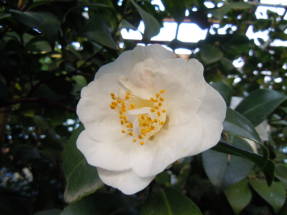 | 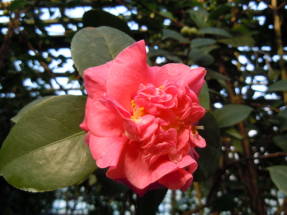 |
Possible problems when growing camellias
- The fall or absence of flower buds can be caused by a lack of moisture in the summer, when the buds are forming, as well as an excess of fertilizer or sudden hypothermia.
- Yellowing of leaves, chlorosis can be caused by alkalization of the soil (when the pH exceeds 6.5), this interferes with the absorption of nutrients by the roots. Acidify the soil, use soft water for irrigation, water potted plants with water with the juice of any citrus (1-3 drops per liter).
- Burnt or yellowed areas in the center of the leaves are sunburn. Protect the leaves from the scorching sun, do not overdry the substrate.
Diseases and pests of camellias
Camellia galls are a fungal disease that causes the leaves to swell, turning white and creamy, then brown, and later falling off. At the first sign of illness, remove the affected parts of the plant.
Camellia is susceptible to phytophthora of roots, the disease is most dangerous when the roots overheat in combination with stagnant water. Do not place the plant pot in the sun and do not overmoisten the soil, especially during the heat.
The yellow spot virus is found on camellia. The disease does not respond to treatment.
Camellia is affected by various types of scale insects, especially tea scale insects, weevils, and aphids. If a pest is found, treat the plant with Aktara or other systemic insecticides.
Read more in the article Houseplant pests and control measures.
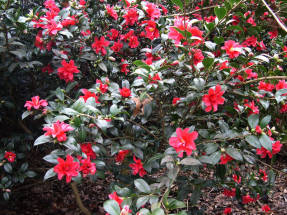 | 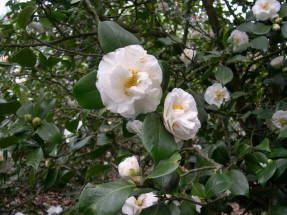 |

